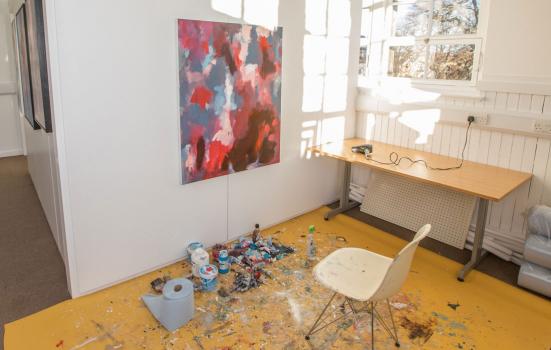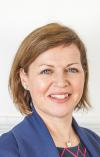Once forced to migrate through lack of opportunities, artists in the Scottish Highlands are now coming together to experiment and collaborate in the region's first creative hub, writes Audrey Carlin.

The first major creative hub in the Scottish Highlands has just opened its doors as part of Wasps’ ongoing drive to provide artists, makers and creatives with high-quality studio and workspace. In this way, we hope that Inverness Creative Academy is also beginning to help tackle broader issues about the lack of infrastructure and other support to help build creative careers and businesses across the Highlands.
Our demonstrable sustainability gives potential partners, public and private, the confidence to work with us on substantial regeneration projects
Right now, the shortage of quality facilities makes it difficult for many creative people to stay and flourish in the region they love. The problem affects people of all ages and backgrounds, but is especially acute among young graduates from institutions like the University of the Highlands and Islands. Many have to head for the central belt of Edinburgh and Glasgow, or go to England or overseas to find opportunities.
Studios and jobs
December’s completion of the £2.2m phase 1 has brought 30 new studio spaces, plus an exhibition and events hall and a darkroom. Phase 2 of the £5.7m project is underway, and will create 54 desk spaces for cultural and social enterprises and creative businesses, plus a public café.
The project was designed in close consultation with the Highlands arts community, and when we were ready for applications there was an open invitation for potential tenants to meet us and look round. As a result, the studios are already alive with a wide range of visual artists, textile designers, a photographic collective and an artist who crochets glass. There are also multi-disciplinary artists with impressive digital expertise.
Ultimately, it should lead to 109 full-time-equivalent jobs, generating annual wage earnings of £2.7m.
Like many of our initiatives, it adds up to much more than the sum of its parts. At one level it is about affordable, quality space to work, exhibit and run classes and workshops. At another level it is a place to experiment, collaborate and cross-fertilise. We, and other agencies, will also offer training and other support to help tenants flourish.
New uses for old buildings
The scheme involves the transformation of the empty Midmills Buildings, attractive Victorian B-listed structures in the centre of Inverness that were previously part of the Inverness Royal Academy, and where children from as far away as the Western Isles once went to school.
The scheme also sits within a wider set of initiatives to enhance cultural business and tourism across the Highlands, including finding new uses for Inverness Castle.
Inverness is our first creative hub outside Edinburgh and Glasgow and, with public grants in short supply, it has probably only been possible because of our unusual business model. We have a long track record, going back to the 1970s, of repurposing old buildings for the arts. Low rents have allowed us to move away from depending on the public sector for core income.
Our demonstrable sustainability gives potential partners, public and private, the confidence to work with us on substantial regeneration projects. That in turn gives us the freedom to be flexible, accept risk and pursue our own agenda, in a way that many other charities and social enterprises cannot. All this has been vital for Inverness, where we formed a consortium with the local authority and a private housebuilder.
Likewise, we have been able to carry out innovative projects elsewhere in the Highlands and Islands. One recent example is The Admiral’s House on Skye, an artists’ residence at the former home of amateur painter Vice Admiral Sir Roddy Macdonald. In the past four years we have also made significant investments in Orkney and developed the Links Studios complex in Nairn.
A little further south, work is starting on the Perth Creative Exchange, where we are collaborating with the local authority to transform another former school building to provide 26 artists’ studios and space for 13 creative businesses. Like Inverness, Perth has difficulty retaining talent due to the lack of infrastructure for graduates and others to start and sustain creative careers and businesses.
Commercial awareness
Our hope is that our projects will act as catalysts, giving others the sense that the Highlands and Islands are good places to live, work and invest. As a charity and social enterprise, Wasps is dedicated to benefiting its tenants and society as a whole. In order to do that we are having to adapt to the changing needs of our tenants and the overall economic environment, and that has meant renewing our own organisation.
Our response has been to become more commercially aware. One way we have done this is by welcoming business figures with a proven interest in the arts, such as Hugo Burge, to the board. In doing so, we are securing the skills and credibility we need to develop more projects, studio space, facilities and opportunities to support a bright economic future for artists and makers in the areas of Scotland where they want to live and work.
Audrey Carlin is CEO of Wasps Artists’ Studios.
www.waspsstudios.org.uk




